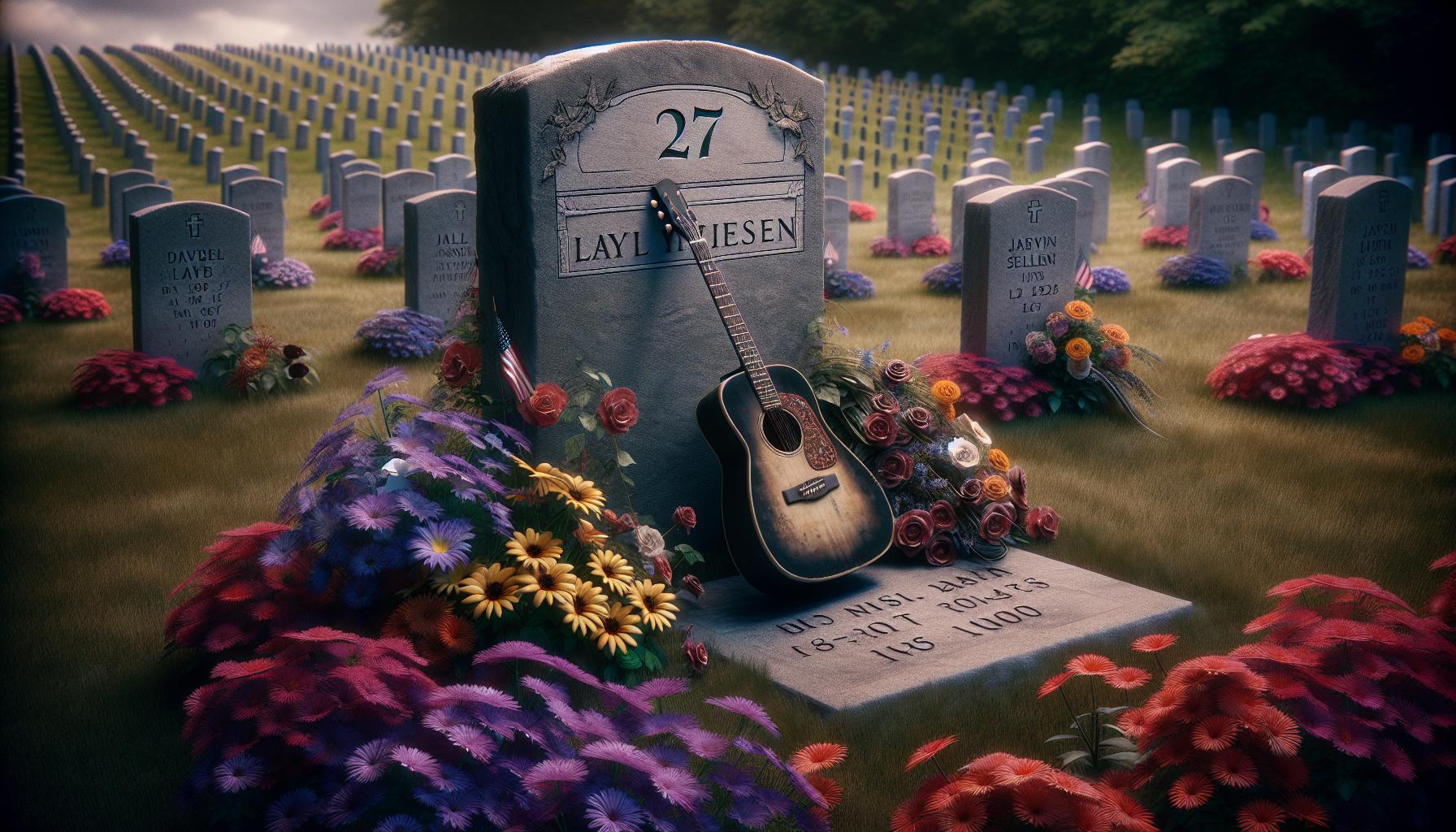The age of 27 has become notorious in the music world, often linked to a tragic pattern of untimely deaths among iconic musicians. This phenomenon, sometimes referred to as the “27 Club,” includes legendary figures who left an indelible mark on the industry before their lives were cut short. From rock legends to influential pop stars, the list of artists who passed away at this age raises questions about the pressures of fame and the darker side of artistic genius.
With a surprising number of talented individuals succumbing to their struggles at 27, it’s essential to explore the stories behind these losses. Understanding the impact of mental health, substance abuse, and the relentless demands of the music industry can shed light on this haunting trend. This article delves into the musicians who tragically died at 27 and examines the cultural significance of their brief yet impactful lives.
Key Takeaways
- The “27 Club” signifies a tragic pattern of iconic musicians who died at the age of 27, highlighting the pressures associated with fame.
- Notable members include Jimi Hendrix, Janis Joplin, Jim Morrison, Kurt Cobain, Amy Winehouse, and others, all of whom left a lasting legacy in the music industry.
- Mental health struggles and substance abuse are prevalent among musicians, often linked to the intense stresses of their careers.
- The cultural fascination with the 27 Club underscores the fragility of artistic life and raises awareness about mental wellness and addiction issues.
- Statistical research indicates that musicians have a higher mortality rate compared to the general population, driven by factors such as substance abuse and mental health challenges.
- Recent additions to the 27 Club, including Jahmil French, Lil Peep, and Mac Miller, reinforce the ongoing need for supportive measures in the music industry.
How Many Musicians Died At 27
The 27 Club comprises prominent musicians and artists who died at 27, leaving behind a lasting legacy. This group includes renowned figures such as Jimi Hendrix, Janis Joplin, Jim Morrison, and Kurt Cobain. These artists made significant contributions to their respective genres, influencing countless musicians and fans alike.
Members of the 27 Club often faced immense pressure, which frequently led to struggles with mental health and substance abuse. Their deaths raise critical discussions about the consequences of fame, mental health stigmas, and the music industry’s demanding nature. Research indicates that many artists encounter intense stress due to public expectations, creative challenges, and personal battles.
Cultural fascination with the 27 Club persists, as it symbolizes both the brilliance and fragility of artistic life. The tragic nature of these untimely deaths highlights societal issues concerning mental wellness and addiction, prompting further exploration into supportive measures for artists.
Notable Musicians Who Died at 27

Numerous musicians who died at 27 left an indelible mark on history, shaping genres and influencing countless artists. Their legacies continue to resonate within the music community.
Rock Legends
- Jimi Hendrix: Renowned for his innovative guitar techniques and electrifying performances, Hendrix passed away in 1970 from asphyxia due to drug use. His album Are You Experienced revolutionized rock music.
- Janis Joplin: A symbol of the counterculture movement, Joplin’s powerful voice and emotional depth characterized her work. She died from a heroin overdose in 1970, shortly after recording Pearl, which remains a classic.
- Jim Morrison: The charismatic frontman of The Doors, Morrison became an icon of rebellion. He died in 1971 from heart failure, though speculation surrounding circumstances persists. His poetry and music still inspire generations.
- Kurt Cobain: As Nirvana’s lead vocalist and guitarist, Cobain defined the grunge movement. He died in 1994 from a self-inflicted gunshot wound, leaving behind Nevermind, an album that reshaped the music landscape.
- Amy Winehouse: Winehouse’s unique blend of jazz, soul, and R&B earned her critical acclaim. She died in 2011 from alcohol poisoning, with her acclaimed album Back to Black showcasing her extraordinary talent.
- Robert Johnson: Often hailed as the “King of the Delta Blues,” Johnson’s music laid the groundwork for modern blues. He died in 1938 under mysterious circumstances, but his influence is still felt in the genre.
- Brian Jones: A founding member of The Rolling Stones, Jones contributed to the band’s early sound. He died in 1969 due to drowning, which raised questions about his tumultuous lifestyle and substance use.
- Malcolm Hale: Lead guitarist for the folk-rock band Spanky and Our Gang, Hale died in 1971 from carbon monoxide poisoning. His contributions to the band helped define a unique sound during the 1960s.
These musicians exemplify the brilliance and vulnerability of artistic life while highlighting the persistent issues surrounding mental health and substance abuse within the industry.
Theories Behind the 27 Club Phenomenon

The 27 Club phenomenon raises significant questions about the intersection of mental health, substance abuse, and the pressures of fame. These factors contribute to a troubling pattern among talented musicians.
Mental Health and Substance Abuse
Musicians often navigate intense emotional landscapes, leading to mental health challenges like depression and anxiety. Many artists struggle with substance abuse as a coping mechanism for the pressures surrounding their careers. This pattern frequently leads to tragic outcomes. For instance, Kurt Cobain’s battles with depression and heroin addiction culminated in his untimely death, highlighting how these issues intertwine. Similarly, Amy Winehouse faced highly publicized struggles with addiction, ultimately succumbing at 27. The combination of mental health struggles and substance abuse significantly factors into the premature deaths of musicians, suggesting a deep-rooted issue within the industry’s culture.
Cultural Impact and Legacy
The impact of the 27 Club extends beyond the tragic loss of life; it shapes cultural discourse surrounding fame and artistic expression. These musicians serve as symbols of brilliant yet fragile human life. Their music continues to resonate with audiences, blending innovation with poignant themes of struggle. The legacy of artists like Jimi Hendrix and Janis Joplin remains influential, inspiring countless musicians and fans. Their stories prompt discussions about mental wellness and the necessity of support systems for artists. Consequently, the ongoing fascination with the 27 Club highlights the urgency to address the complex issues that affect creative individuals within the industry.
Current Trends and Statistics

The phenomenon of musicians dying at the age of 27 continues to capture public interest. Statistical analysis reveals insightful trends associated with this age and the lives of prominent artists.
Analysis of Musicians’ Lifespan
Research shows that musicians frequently face unique pressures that contribute to a precarious lifespan. Various studies indicate that the average lifespan of musicians can be significantly lower than that of the general population. For instance, a study from the British Journal of Psychiatry cites that rock musicians have a mortality rate 2.5 times higher than that of their peers. Factors influencing this trend include:
- Substance Abuse: Many musicians encounter substance dependency, which correlates with increased mortality rates.
- Mental Health Issues: High incidences of depression and anxiety among artists lead to impaired decision-making and risky behaviors.
- Intense Stress: The demands of fame often exacerbate mental health issues, resulting in tragic outcomes.
Recent Additions to the 27 Club
Tragically, the 27 Club continues to expand as new musicians join its ranks. Recent years saw the loss of several notable artists who died at 27, including:
- Jahmil French: The actor and musician gained fame through his roles in the entertainment industry before his untimely death in 2020.
- Lil Peep: The rapper died in 2017 from an accidental overdose, epitomizing the struggles associated with fame and substance use.
- Mac Miller: His death in 2018 from an accidental overdose highlights the toll that the pressures of the music industry can take on individuals.
These events further emphasize the ongoing relevance of discussions about mental health, addiction, and the need for better support structures within the entertainment field. The complex interplay of fame, creativity, and vulnerability remains a critical topic for examining the experiences of artists.
Balance Between Creativity And Mental Health
The legacy of musicians who died at 27 serves as a poignant reminder of the fragile balance between creativity and mental health. Their extraordinary talents left an indelible mark on the music industry, yet their struggles highlight the darker side of fame. As discussions around mental wellness and substance abuse continue to evolve, the stories of these artists resonate more than ever.
Recognizing the pressures faced by creative individuals is crucial for fostering a supportive environment. The ongoing fascination with the 27 Club underscores the need for greater awareness and resources to help artists navigate their unique challenges. Their lives and untimely deaths inspire a call to action for improved mental health support within the music industry.